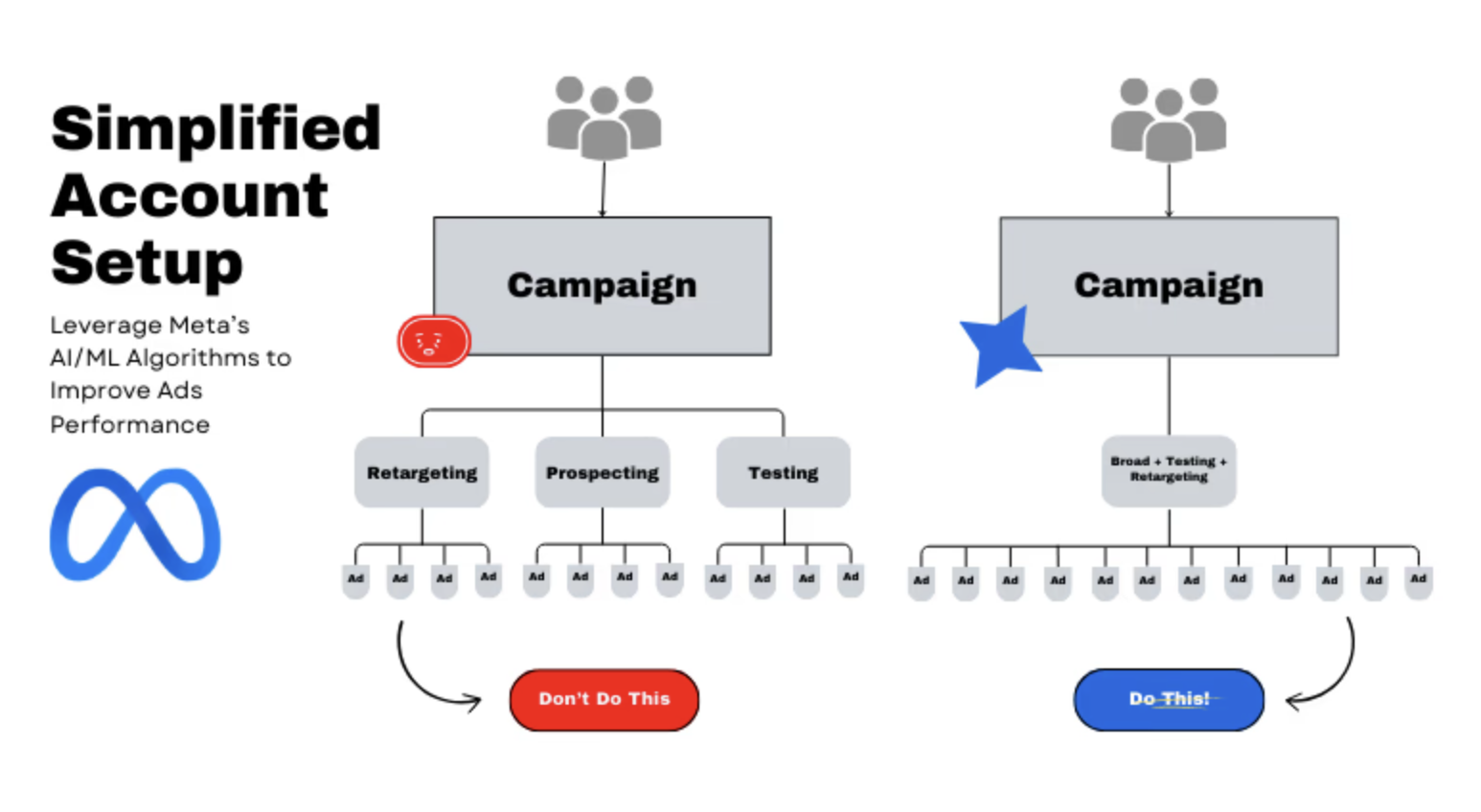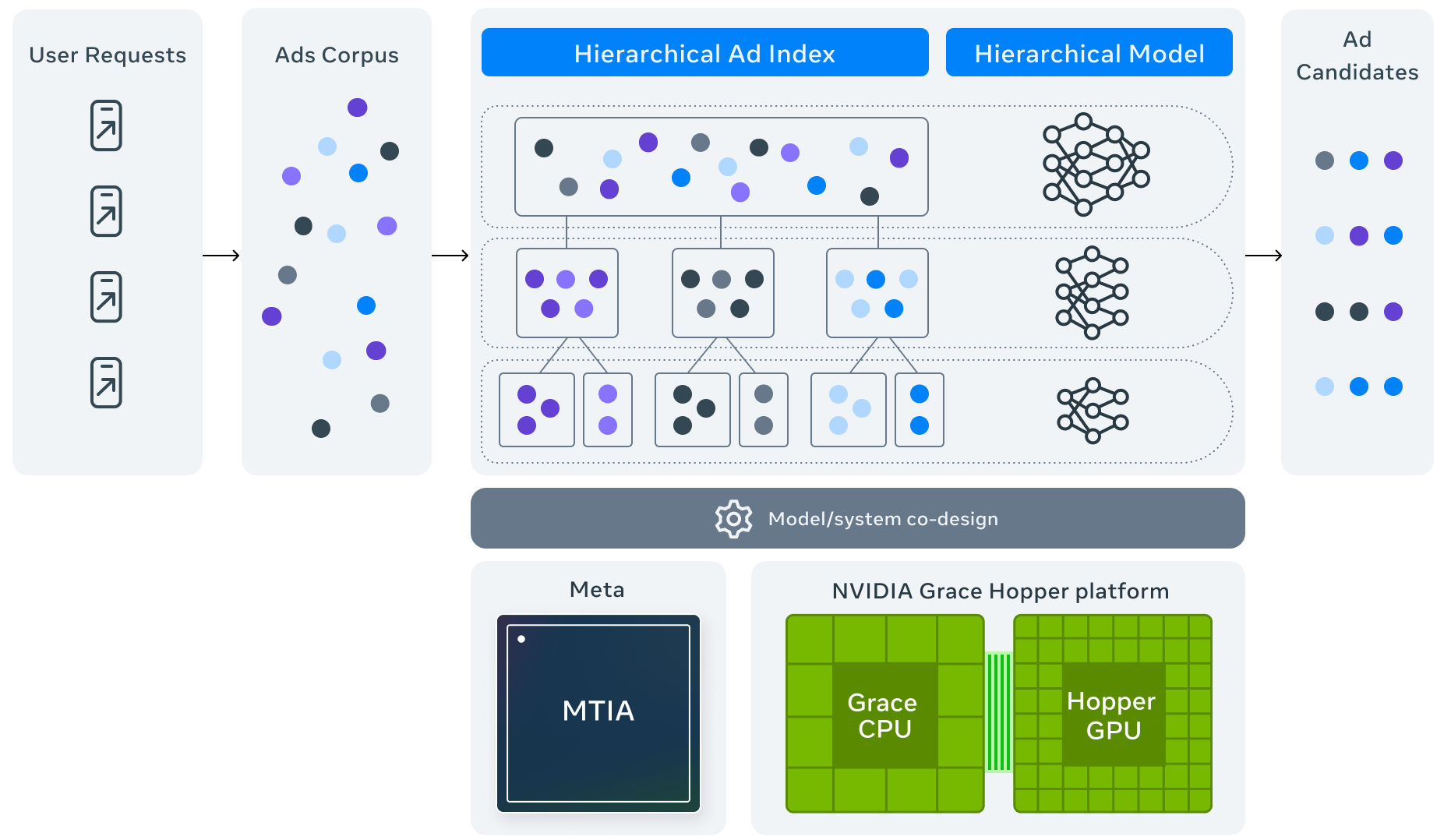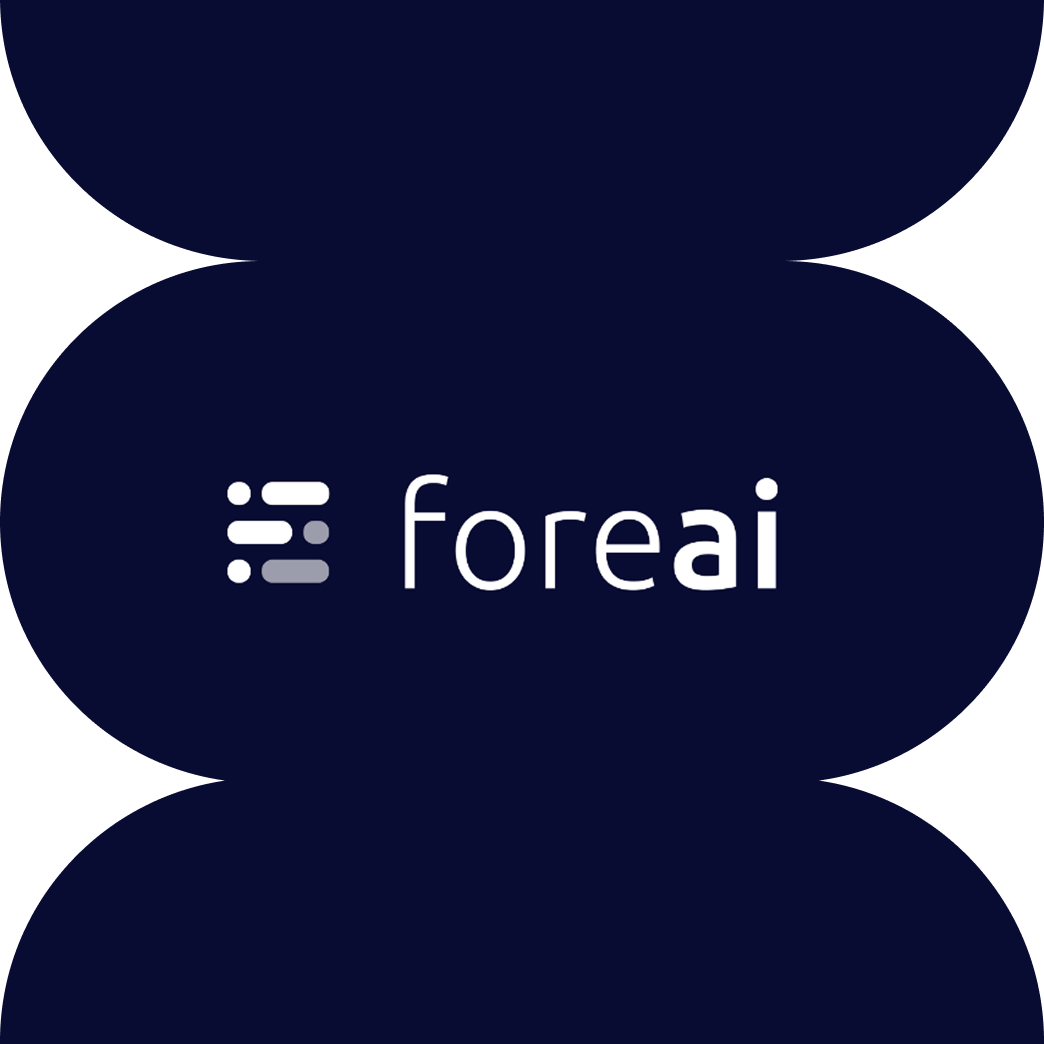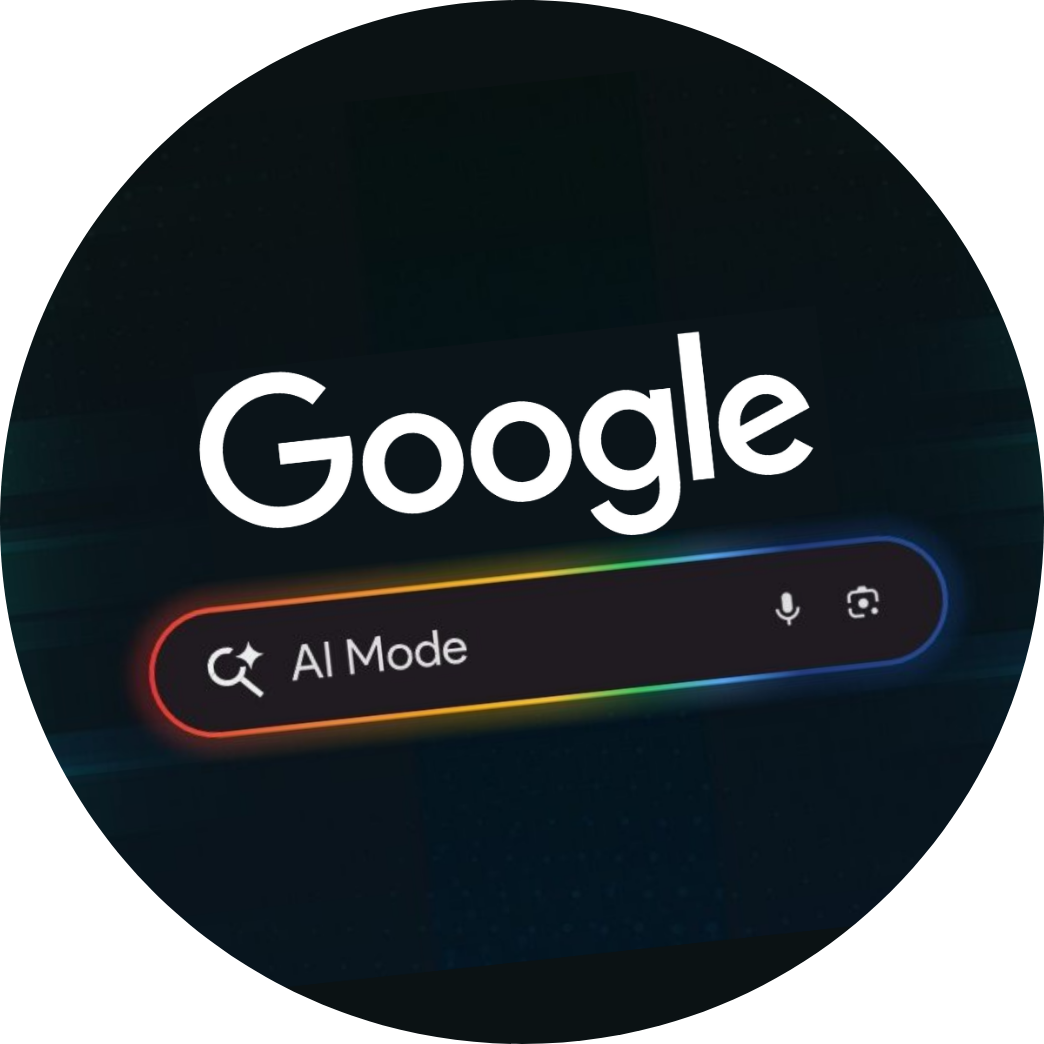
No, this isn’t a new colleague who just joined HT&T, nor Perseus’s mythical wife, nor the spiral galaxy closest to Earth.
Andromeda is a key piece in Meta’s complete rebuild of its advertising infrastructure, the most significant AI-based update since the iOS 14 crisis.
 We are therefore facing a watershed moment for anyone investing in advertising campaigns on Meta (Facebook and Instagram).
We are therefore facing a watershed moment for anyone investing in advertising campaigns on Meta (Facebook and Instagram).
Origins and functions
The core function of this new AI system is to decide in real time which ads to show and to which users. Its gradual rollout, which began in late 2024 and was completed over the last few months of 2025, had a clear goal: to make campaign management even more automated, intelligent, and predictable.
The need for this change was driven by an internal operational issue at Meta: the exponential growth of ad content due to the introduction of tools like Advantage+ Creative and GenAI.
The result was a steep increase in the number of ads in circulation—from millions to hundreds of millions—creating a load that Meta’s old infrastructure could no longer sustain.
Andromeda can therefore operate in the most critical stage of ad delivery (Retrieval) using deep neural networks.
This new AI engine can process between 100 and 1,000 times more ads than before, learning complex patterns and personalizing delivery at a hyper-granular level.
In practice, the system can show the right content to the right person.

A practical example:
Let’s take Marco, who is considering buying a V-neck cashmere cardigan.
While browsing Instagram, he interacts with an ad from Brand A. This first click is the signal that activates the algorithm and triggers:
- Brand A’s action: Brand A’s algorithm, optimized for Andromeda, won’t just show him the same ad repeatedly. It will orchestrate a varied path: perhaps a Story highlighting the craftsmanship of the cashmere, then a carousel with different styling combinations.
- Meta’s ecosystem action: Meta has now labeled Marco as an in-market user for “luxury cashmere apparel.” As a result, Brands B and C—set up with similar targeting—will also compete for his attention.
The outcome is that Marco’s feed turns into a truly competitive space. He won’t just see ads from Brand A, but a strategic mix of content from multiple companies.
In this scenario, the system hasn’t just identified Marco as the ideal buyer persona; it has created a discovery experience where several brands compete for his preference. The winner won’t be the brand that shows the most impressions, but the one that—thanks to a richer, more relevant creative ecosystem—tells the best story and convinces him along his purchase journey.
The 3 Pillars of Change: Targeting, Creativity, and Structure
So, what are the main consequences for advertisers?
The end of manual targeting
Before Andromeda, best practices for concrete results relied on precise, manual audience segmentation (interests, specific demographics), which has now been largely surpassed by Meta’s AI capabilities.
The winning strategy has become broad targeting, allowing the algorithm to find the user segments most likely to convert. Over-restricting the audience worsens performance because it limits the system’s learning capacity.

Creativity is the new targeting
If the past rewarded the best targeting, now the advantage goes to those who produce the greatest creative diversity: the best practice is to diversify creatives as much as possible by creating multiple ads within the same campaign. The algorithm is no longer looking for a single “perfect ad”; the goal is to match each creative variation (videos, carousels, copy addressing different pain points) to its specific micro-segment. The more creatives you have, the more usable signals the AI gets.
Simplified campaigns
Complex and fragmented structures, with numerous ad sets to manually control variables, are now counterproductive. The new best practice calls for consolidated structures: a single campaign per objective with Campaign Budget Optimization (CBO) enabled, and dozens of different creatives inside it. This simplicity allows Andromeda to learn and optimize the budget more effectively.
The crucial role of marketing consultants
Andromeda therefore presents itself as a significant—and potentially very profitable—automation, with estimated ROAS uplifts of +22% when using optimized creatives.
However, the price to pay is the loss of the granular control we had in the past when everything was managed manually: the system manages budget and creative distribution, and its decisions are often hard to interpret.
A “black box” is emerging—one that requires human expertise to be governed effectively. Meta’s system won’t take advantage of advertisers’ budgets only if a team of experienced marketing consultants, like us at HT&T, supervises and guides the AI.
Here’s why:
- Strategic setup: AI optimizes, but it doesn’t set strategy. Experts must define the true objective (leads, sales, etc.), identify the ideal customer, and build a robust funnel to convert the generated traffic. If the objective is wrong or the landing page isn’t optimized, Andromeda will waste budget optimizing for weak signals.
- Budget management: The system may suggest increasing budget too quickly or focusing on low-yield tests to exhaust spend. Experts know how to read real data (CPL, cost per purchase, ROAS…) and can set the right amounts for the objectives without blindly trusting automation.
- Creative architecture: We’re not just marketing consultants—we’re also “campaign architects” and strategic content producers. We must ensure Andromeda gets the volume and variety of creatives (15–20 assets with constant refresh) it needs to reach its full potential.
In conclusion: well done, Andromeda!
But let’s never forget the importance of carefully planned strategies, targeted creatives, and strong data analysis skills.
Without expert guidance, artificial intelligence can scatter budget across a sea of ineffective attempts.
Only with the right expertise can this system become a genuine competitive advantage.
Frequently asked questions about Andromeda (Meta)
What is Meta’s Andromeda?
It is the new retrieval engine for ads: it filters millions of ads in real time and selects the most relevant candidates before ranking/auction, improving relevance and performance.
When was it released and how widespread is it?
Meta described Andromeda in engineering channels in late 2024; in 2025 the update was widely rolled out and now affects ad delivery on Facebook and Instagram.
What changes for targeting and manual segmentations?
The weight of manual targeting decreases while automation (e.g., Advantage+) increases. Broad audiences with strategic exclusions work better than rigid micro-segmentations.
How does it impact campaign structure?
Less fragmentation, more consolidation: fewer campaigns/ad sets, pooled budgets, many creatives under test. The algorithm optimizes distribution across formats and placements.
What is the role of creatives?
Creative diversity becomes central: more variants (formats, angles, hooks) help Andromeda find the right match. In practice, “creativity is the new targeting.”
Do I need to change anything in tracking?
Yes: prioritize clean, complete signals (CAPI/server-side, deduplication, event quality). Well-configured objectives and conversions help the algorithm optimize correctly.
Which metrics should I track to assess impact?
Beyond CPA/ROAS, look at creative distribution, reach/frequency, learning phase stability, downstream traffic quality (onsite engagement, AOV, conversion rate), and delivery stability.
Immediate best practices?
Consolidate budgets, use broad audiences with exclusions, increase creative variants, keep conversion/CAPI setup clean, and run cyclical tests without frequently interrupting learning.
Continua a leggere
And it consumes less energy.
To return to the page you were visiting, simply click or scroll.


